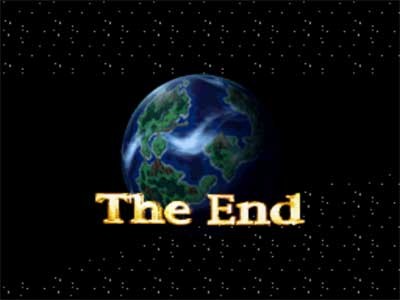how i got into rpgs
In 1996 I was 9 years old and I my closest friends and I had a distinguished friendship based on videogames, legos, and imaginary worlds. My friends and I of us embarked on numerous lego adventures, what we would call “times”.
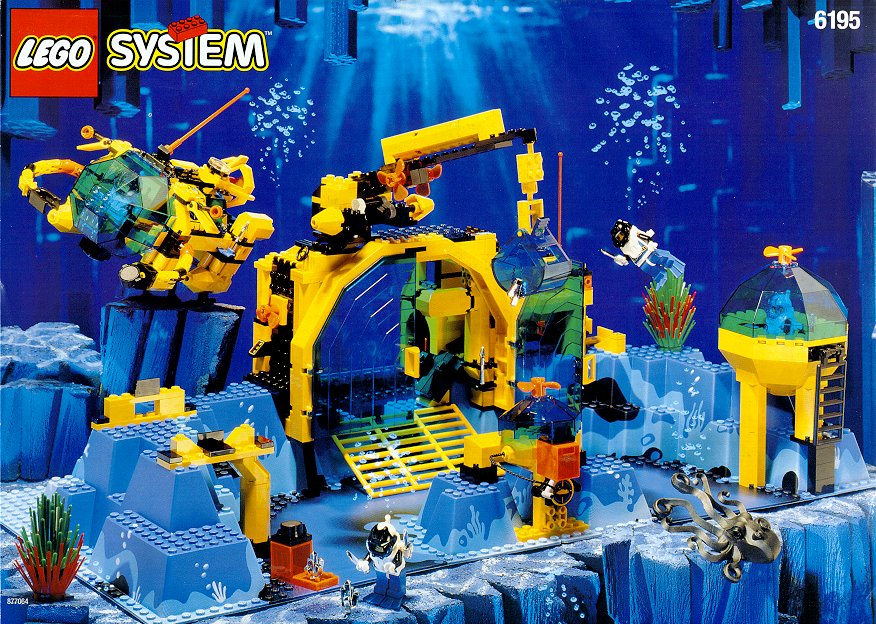
This particular lego set was the source of much of my imagination...
The idea was actually inspired heavily by Chrono Trigger, an RPG that came out the same year. We would each design our own “time periods” that we would “time travel” to by flying appropriate vessels of lego crafts from one house to the next. Andy had “Medieval” times, Kevin had a “Near Future” featuring a battle arena, and I had “Post-Apocalyptic” time where giant robots ruled (a la Voltron or Gundam). Joseph also had a “Post-Apocalyptic” time which was underwater (I think there was a bit of a rivalry between us).
This was only the beginning of my adventures as an imaginatarian; I continued to delve into the worlds of my own creation, and I suppose all of them have been inspired by RPGs.
What are RPGs but the honest medium of imagination itself? You are thrust into a world unlike you own in which you must seek to take action on behalf of a character that you become. The allure is strong for those who have an active imagination.
When I was about 4 years old, it was 1990, and my parents had purchased my first videogame system: an NES. My parents would stay up late at night playing together while I slept. Of course, the system and TV were in my bedroom, so I would inevitably wake up and ask what was going on. I would be promptly shushed and put back to bed. Eventually I got to put time into the game myself, but I never beat it. Something about the repetitive, challenging levels never kept my attention for long.
I much prefered Excitebike. It would take me another 20 years to buy a motorcycle, but this game was fascinating primarily because of the level creation tool. I spent many hours creating my own worlds from scratch, finding immense satisfaction from creativity. I longed for a day when I could perhaps mount a virtual bike and ride through the tracks I created in first person. Or maybe, even something as simple as sitting in virtual stands as I watch other players test out my track.
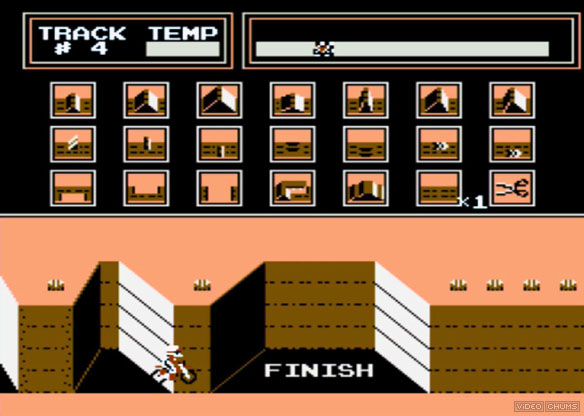
The true precursor to Minecraft...
But this also wasn’t enough, as the racing eventually became monotonous. I needed an adventure. That’s where Adventure Island came in. There was no obvious plot, and certainly no leveling up, but gaining new weapons and new powers, as well as slightly less difficult gameplay than most other NES games at the time, I got really drawn into its world. But once again, I never beat it. Once I got deep enough in the game and died, repeating the quest did not have the same draw as before. It was just an empty quest with random enemies. I would imagine stories about the various dinosaurs I encountered, why they were where I found them, and the purpose of their existence, but I needed something that would draw me in.
Somewhere around then I was introduced to Sonic the Hedgehog by my friend Chad who lived across from the kindergarten we attended in Valencia, CA. I remember fondly as we played it late into the night. I enjoyed the world of Sonic, especially the music, and felt inextricably attached to the character, certainly due to their successful marketing techniques.
I even remembered my first rental game: Ghostbusters. I could barely play the game (nobody could), and I cried so hard my parents returned it for me so I could get a copy of Ghostbusters II which was coincidentally equally hard, and succeeded in giving me nightmares.
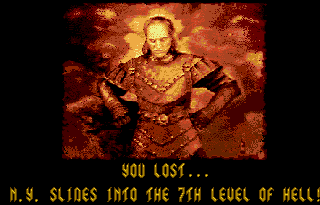
This game over screen haunted me in my dreams.
At the age of 5, I moved to Foster City, CA, where I would spend the remainder of my childhood. My new babysitter Jackie introduced me to The Legend of Zelda, which she had mastered thoroughly. She liked to show me how she found all of the secrets in the world. I would sit there watching her play, and she would offer me a chance to play too, but if I died too much she would take over and show me what I needed to do.
Zelda was still not enough, as I did not care for the constant stream of enemies. I wanted to know more about the castles and why they were there, not simply kill absurd enemies indiscriminantly. I wanted a story to follow. Zelda was just too thin for me, so I avoided it.
And I nearly gave up on videogames at this point as I began to have a passion for creating my own worlds. I began drawing comics about my friends, representing each of them as aliens. Something about writing just appealed more to me than videogames because I could explore my imagination thoroughly.
It was 1992, and my good friend Luke with whom I spent countless hours playing videogames and legos, suddenly moved back to the UK. In the wake of his unfortunate departure, he gifted me his SNES with Super Mario World, and Turtles in Time.
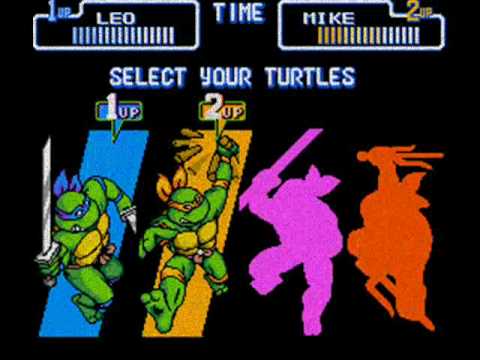
If you can hear the music in your head right now, you had a good childhood.
Aside from playing Turtles in Time endlessly with my brother Adam and friend Steven, I valued the single player experience from Super Mario World due to its overworld exploration aspect. The castles and enemies, like Super Mario Bros. 3 provided a level of depth to the game that I had never seen before. I imagined myself as an explorer – unlike the main theme of the game – traversing a world I had never seen before, and visiting towns and villages full of hostile creatures. I wanted something like that so bad that I was willing to superimpose my own imaginary needs on a game that was not providing it.
Speaking of my friend Steven, he owned a game known as “Zelda, Link to the Past” which was above and beyond my previous experience of the game. We would usually play it between visits to the local pool and I keenly remember playing it one afternoon right after I had participated in a local soccer league game. I loved this game so much, I got in huge trouble once when I went to Steven’s house after school instead of my own home and didn’t tell my parents. I was just so excited that I forgot to call them and got temporarily banned from visiting his house after school. Because it was going to be harder to hang out at his house, I had to then develop other means of getting access to games.
It was 1994 and my parents wouldn’t let me buy any games still (probably because a $60 game then cost the equivalent of $100 today). That, and I think they were wary of encouraging my videogame habit.
So, I got smart and convinced them to let me rent games instead. They reminded me of the Ghostbusters incident, but I shrugged it off and convinced them to give me an allowance of one game a week. The place was called Foster City Video II because I guess sequels make so much more lot of money. Ye’arl!. Even as a kid, I got to know the family employees of the store pretty well, and they would even recommend me movies and games. I learned a lot from them.
One of the first games I rented from them was Star Fox FX which blew me away with its incredibly new 3D graphics and pretend voices. The game captured my imagination with intricate world, but once again was a slog, and I got sick of restarting over and over again. And videogaming seemed like an all but lost cause…
Until one day I went to Kevin’s house and saw him playing a game on his Sega Genesis. “It’s called Shining Force” he said to me as I curled up on his couch to watch him play. I was curious about the mechanics. The idea that you couldn’t move your character freely during battle was alien. And the cut scenes when you got to attack enemies were shocking and graphic. I was enamoured.
So I felt disappointed when I discovered, upon my next visit to the game store, that Shining Force was not available for SNES. So, I asked them for a recommendation for a game like it, and one of the employees showed me to a list of games. None of them looked interesting to me and I didn’t understand why I would want to rent them. The games were: Breath of Fire, Soul Blazer, Illusion of Gaia, Ys, and Paladin’s Quest. But I picked a random one, Paladin’s Quest, and gave it a shot. The game confused me, as it wasn’t at all like Shining Force. It was also really hard, and I didn’t understand the game’s mechanics, so I quickly gave up and returned it.
About a year later, though, Andy and I decided to go to the store as he really wanted to get an RPG. I had mentioned that I had tried them and didn’t like them, but he wanted to show me what it was like. We agreed to rent two games and try them together.
I rented Chrono Trigger and he rented Illusion of Gaia. I insisted we try out my game first since we were playing on my SNES, and so we played Chrono Trigger first. But just 30 minutes into the game, we got stuck near the Cathedral where you’re supposed to pick up a hairpin from the stairs.
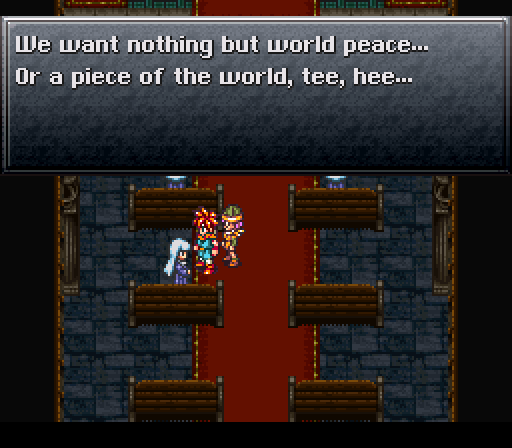
And I wanted nothing but the ability to progress in this game.
I found out from Andy that in Illusion of Gaia you got to turn into a badass with a sword, so I insisted we switch games, which I think Andy was okay with. I immediately fell in love with Illusion of Gaia despite its difficulty and became an instant fan, later introducing me to its predecessor Soul Blazer (and much later in College I revisited the strange, but interesting followup to Illusion of Gaia, Terranigma).
But despite my experience with Chrono Trigger, I really wanted to try more RPGs. That’s when I discovered another game at Foster City Video II that I hadn’t noticed before: Final Fantasy III (originally called Final Fantasy VI in Japan).
For a few months, any time I would return the game, one of my friends would basically be at the store waiting to pick up the copy for their rental until each of us ended up buying our own copies of the game (especially since we would always accidentally overwrite each others’ progress on the game when we rented it). I got mine at Christmas that year in 1995 and proceeded to mash through it until the latter half of the game where I became lost and irritated by the free-form aspect of the endgame (if you’ve ever played the game, you’ll know what I’m talking about).
But despite how beautiful and charming the game was, I was still not totally sold on the RPG genre because the mechanics just seemed so awkward and hard. I did not enjoy the battle screen transitions that were popular in the Final Fantasy series (I still don’t) and so it made an impression on me to the point that I still considered an action RPG like Illusion of Gaia a better game, and therefore I found it more fun to rent games like Contra III and Mario Kart.
Then one fateful day in the spring of 1996 I was walking along the blacktop with my friend Eric when we got on the topic of videogames. When the topic of RPGs came up, I mentioned I liked them but sometimes the games had weird mechanics and didn’t progress properly, probably citing Ghostbusters the game. He asked me if I’ve ever played Chrono Trigger, citing it as an example of a really well made game.
“That’s the one I had problems with!” I exclaimed. And it was then that I told him about the Cathedral scene, and he proceeded to tell me how to find the hairpin.
That very day I rushed back to the video store and rented the game again, rushing through the first part of the game that I had played through many times and found that goddamn hairpin! Time melted away as I rushed through the game. To my wonder, I discovered that Eric’s analysis of the game was correct: this was a really well made game. And it wasn’t long until I had collected many of its multiple endings in New Game +.
And as I mentioned before, one of the most inspiring factors of Chrono Trigger was the idea that we could travel through time, which inspired us to model our lego worlds after different time periods, and design space ships that immitated the memorable Chrono Trigger airship “Epoch” and fly them between each others’ townhouses to engage our own original characters in each others’ original worlds.
Thanks to that last minute save by Eric, I am now a major fan of the RPG genre, and Chrono Trigger has been my favorite game ever since (until Bloodborne came out, but that’s another story for another time).
